Sustainability protects our climate, our health and our quality of life while preserving resources for future generations. UCLA has created a sustainability master plan outlining a “bold vision for a sustainable, healthy and resilient future for UCLA.” Learn about how UCLA is reaching its sustainability policy goals, and discover ways to be more sustainable at home — small changes can make a big impact!
Sustainable Food
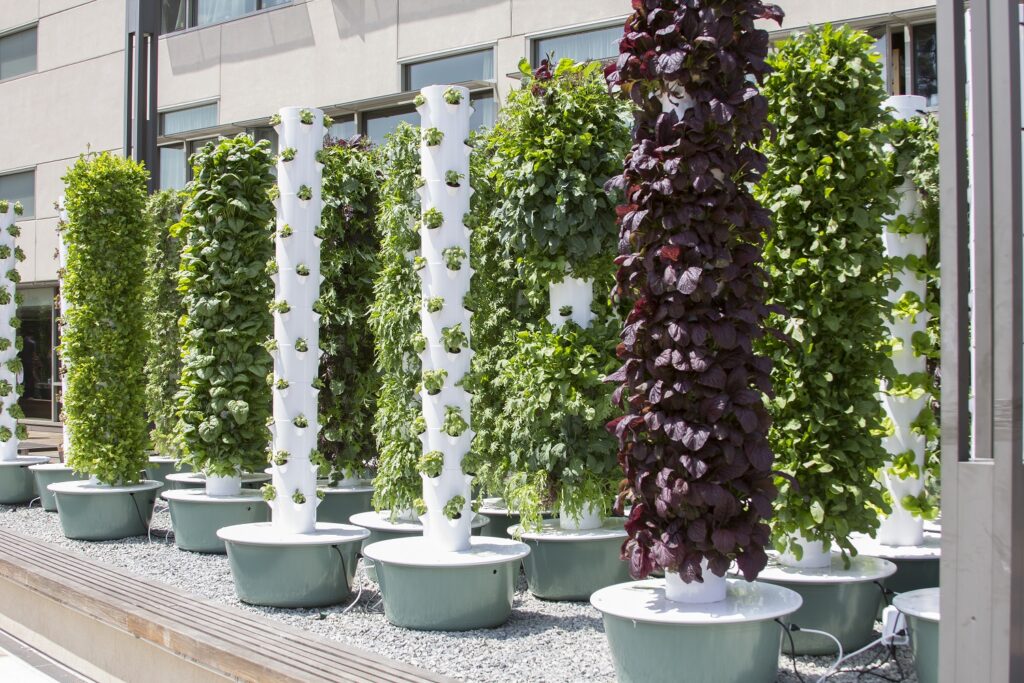
Policy Target:
25% sustainable food purchases by 2030
Sustainable foods protect the environment and avoid wasting natural resources. To determine which foods meet its sustainable criteria, UCLA considers how food is grown, packaged, transported and disposed.
UCLA’s Bruin Plate has a four-star Certified Green Restaurant designation, and is a model for sustainable university dining programs around the country. Bruin Plate offers plant-based products, organic fruits and vegetables, and Fair Trade, Seafood Watch and Rainforest Alliance certified products. Plus, on Mondays all campus dining halls offer a non-meat option for lunch and dinner. On the Sproul landing sun deck you will also find aeroponic grow towers, which use air instead of soil to grow herbs and greens for Bruin Plate.
Simple ways to reduce the environmental impact of the foods you eat:
Adjusting your eating habits is one way to lower your impact on the environment. A shift toward more plant-based foods lessens the substantial greenhouse gas emissions of meat production. You can also plant a home garden or support your community by visiting a farmer’s market or subscribing to a CSA farm box to enjoy delicious seasonal fruits and vegetables.
Landscape & Biodiversity
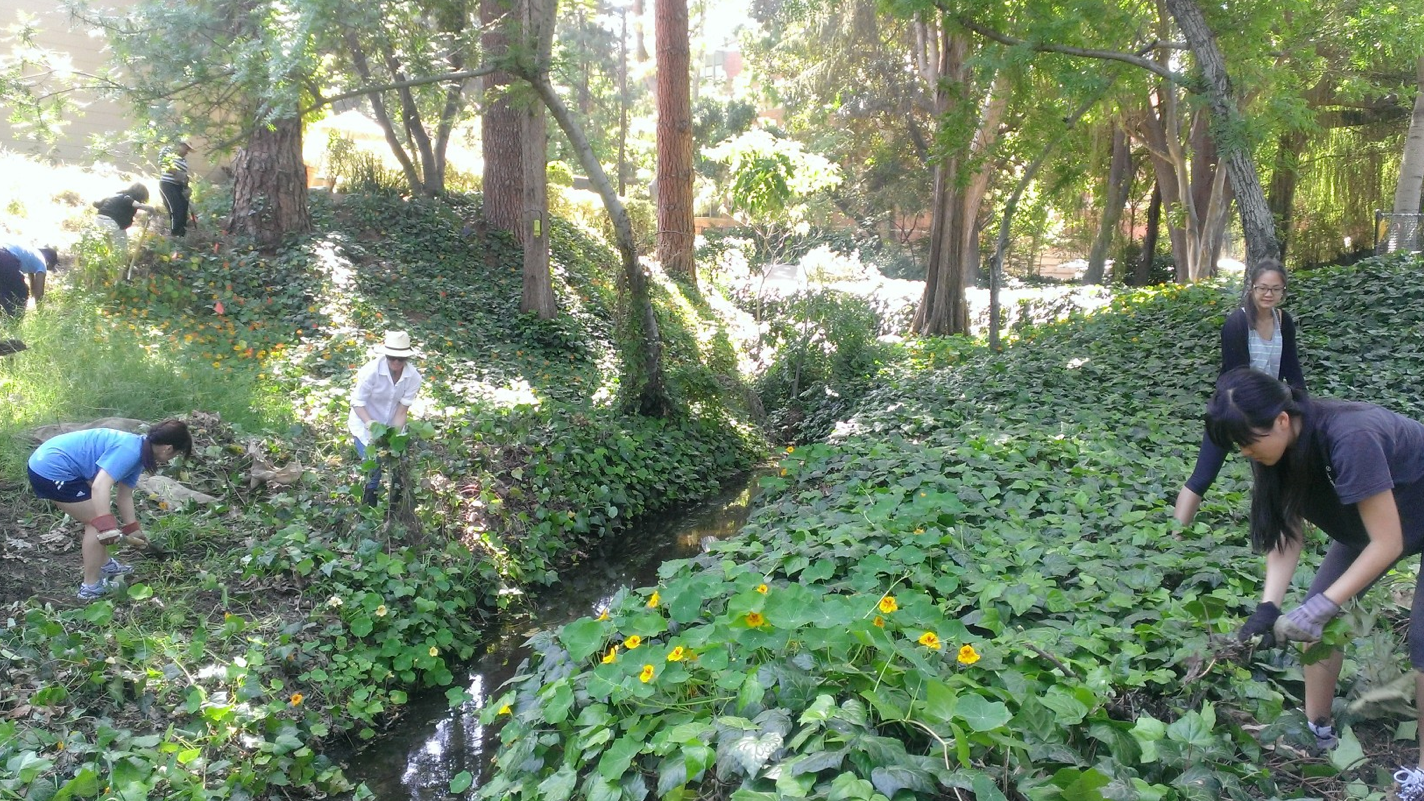
Policy Target:
Increase biodiversity and create a self-sustaining system by using native plants on campus
The UCLA campus is home to more than 550 plant species and 37 species of birds. UCLA has many gardens, including a native plant garden at the Sunset Canyon Recreation Center. The once neglected Stone Canyon Creek behind the Anderson School of Management and the UCLA Lab School has been cleaned up and planted with California native shrubs and groundcover. UCLA’s Intramural Field was transformed from grass to artificial turf, saving 6 million gallons of water per year.
Ways you can be environmentally friendly at home:
If you have space to garden at home, consider growing native plants, which are adapted to the natural climate and use less water than conventional gardens. Mulch your garden with wood chips from landscape pruning to retain moisture and save landfill space. No room for a garden? Grow herbs on a sunny countertop to use in your cooking.
You can view more observations on UCLA’s flora and fauna through UCLA Campus Biodiversity website and, when it reopens, visit the UCLA Mildred E. Mathias Botanical Garden to see their collection of California native plants and the ecosystem they support.
Sustainable Transportation
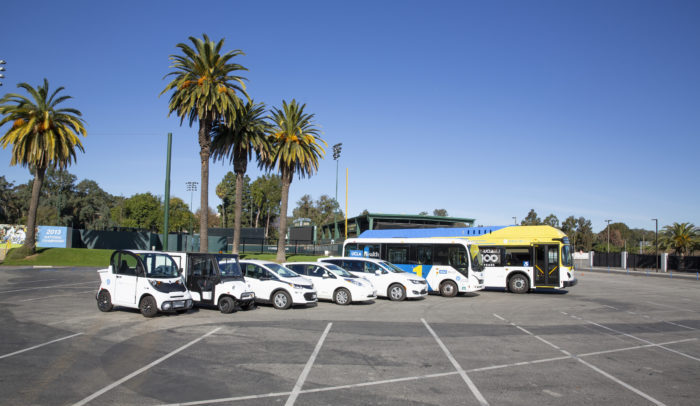
Policy Target:
Run a completely carbon neutral fleet by 2025
Driving is a major source of polluting activity; pre-pandemic passenger vehicles alone accounted for over 28% of all greenhouse gas emissions in California.
Of UCLA’s nearly 1,100 fleet vehicles, 62% are alternatively fueled, including battery-electric, natural gas, flex fuel, biodiesel and plug-in hybrid. UCLA Transportation has added two zero-emissions shuttles to transport staff and patients between the Ronald Reagan UCLA Medical Center and the UCLA Medical Center, Santa Monica. UCLA is also making biking easier on campus with 3,500 free bike parking spaces, newly added bike lanes and public workstations, with a tire pump and tools for repairs.
How you can reduce your carbon footprint at home:
One great way to reduce your emissions is to carpool, walk, bike or use public transit whenever possible. In the car, try to cut down on time spent idling, which pollutes the air, wastes fuel and causes excess engine wear. Consider making an investment in an electric car to significantly reduce your greenhouse gas emissions. California is currently developing regulations to mandate that 100 percent of new passenger cars and trucks will be zero-emission by 2035.
Zero Waste
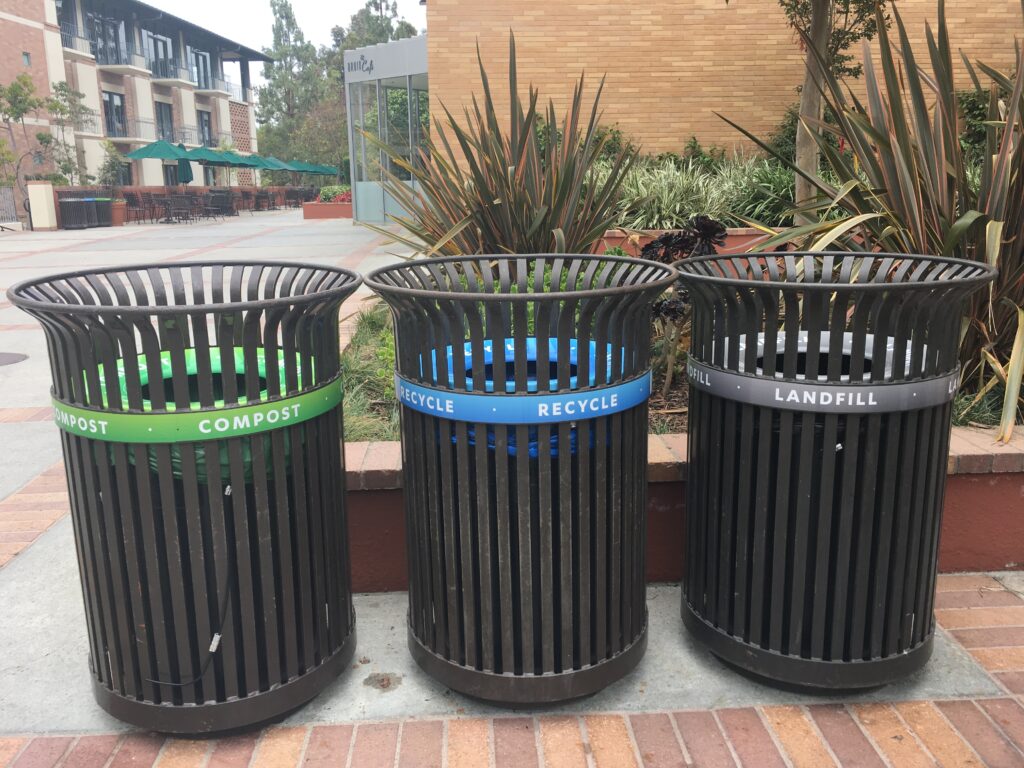
Policy Target:
90% diversion from landfill, 25% reduction of waste per capita from 2016 FY levels by 2025
UCLA is committed to reducing the university’s environmental impact and reaching a zero waste target goal. On campus, you will find three-stream containers which allow users to sort their waste into compost, recycling and landfill streams. The University diverts more than 50 tons of green waste and food waste materials from the landfill through composting at LuValle Commons, North Campus Student Center and Kerckhoff Coffee House.
The student-run program, Bruin Dine addresses food waste, food insecurity and hunger on campus by serving unconsumed food from dining halls to students for free.
How you can reduce your waste at home:
Reduce, reuse, recycle — To cut down on the waste you generate, try bringing your own refillable mug or reusable water bottle and carry your own reusable tote bag. When you’re making a purchase, instead of buying new, consider saving resources and money by buying secondhand. Repurpose a container to create a countertop compost bin for your biodegradable kitchen scraps which you can then use in the garden, or dispose of in your green recycling bin.
Energy & Appliances
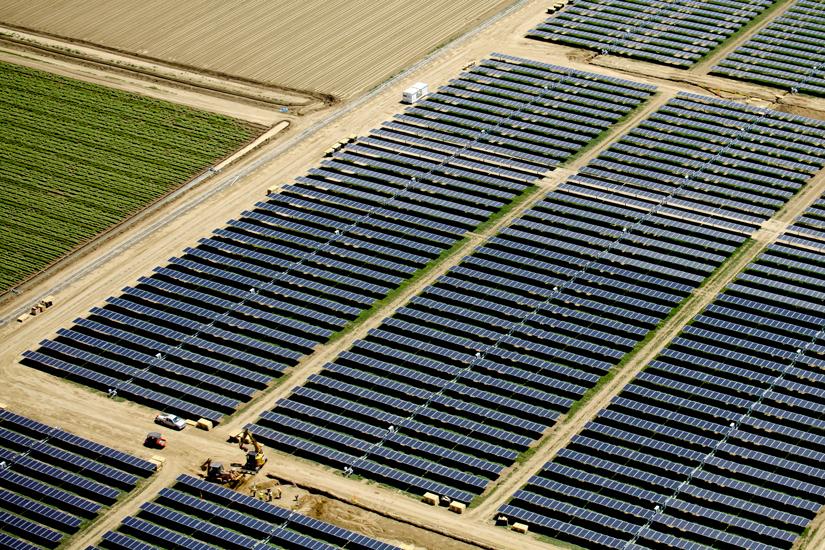
Policy Target:
2% annual energy use reduction, 100% clean electricity by 2025
(source: UCLA’s Carbon Neutrality Plan)
(source: UCLA’s Carbon Neutrality Plan)
Using energy efficiently is important to reduce expenses and to conserve environmental resources. The University of California system has saved $220 million with its energy efficiency programs, including the largest university solar power project solar farm located near Fresno.
UCLA and the LADWP have partnered to fund research that will enable the city to become more energy efficient. UCLA has taken several steps to improve energy efficiency, including: converting older HVAC systems to the latest technology in air distribution and upgrading lighting throughout campus to use more advanced technology — including occupancy sensors, day lighting controls and bi-level stairwell lights.
How you can reduce your energy use at home:
When you leave a room, turn off lights, TVs, computers and anything else that is plugged in to reduce how much “vampire electricity” your appliances use even when turned off — using a power strip can make this easy. And when your laptop is fully charged, leave it unplugged to save hundreds of watts of power. Halogen incandescents, CFLs (compact fluorescent lamps), and LEDs (light-emitting diodes) can cost more than traditional bulbs, but since they use less energy, they will save you money over time.
Green Buildings

Policy Target:
All new construction must obtain LEED (Leaders in Energy & Environmental Design) certification
New campus buildings, such as the Wasserman Football Center and the Mo Ostin Basketball Center, meet environmentally friendly standards such as optimizing energy performance, using low-emitting materials and also incorporate innovative features that conserve energy. The Wasserman Football Center recycles the building’s greywater, and the Mo Ostin Basketball Center uses an underfloor duct system and high volume fans to cool the air. The UCLA Court of Sciences Student Center is planted with drought tolerant California native plants to reduce cooling/heating costs and provide a green space to enjoy a coffee or snack between classes.
How you can you go green at home:
When it's time for new appliances, upgrade to an environmentally friendly model for long term savings. In an apartment or rental, use natural light sources when possible and choose low- or zero-VOC paint. Many apartment buildings are joining the “green housing” trend — look for listings with words like “high-efficiency,” “sustainable” and “eco-friendly.”
Clean Energy
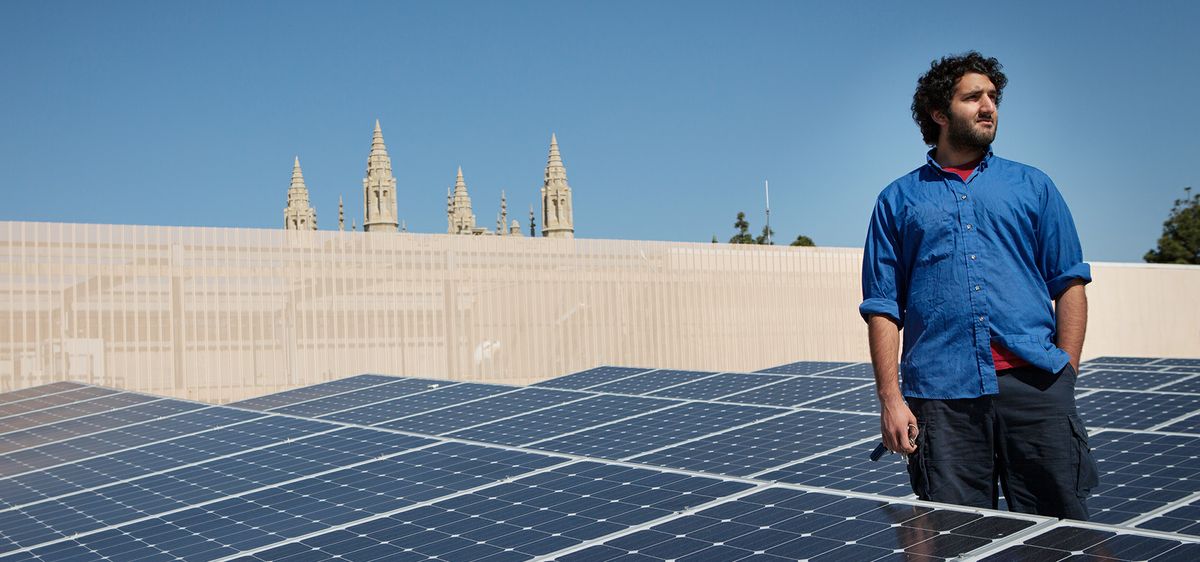
Policy Target:
2% annual energy use reduction, 100% clean electricity by 2025
Solar energy is a truly renewable energy source that is especially suited to sunny Southern California. Ackerman Union was the first UCLA building to have solar panels installed in 2012, and now gets 2.5% of its power from the sun while diverting 200,000 lbs. of Co2 from the atmosphere each year. Solar water heaters supply hot water to UCLA dorms and dining facilities. UCLA researchers are exploring a process to convert carbon dioxide emissions into construction materials, neutralizing this underlying cause of climate change.
How you can use clean energy at home:
Solar energy can be used to generate electricity, heat and for heating water. After the original investment, these systems can be cost effective in the long term while helping the environment. If you own your home, consider installing solar panels to reduce your carbon footprint. There are also wind — and hybrid wind and electric — systems available to homeowners.
Sustainable Water Systems
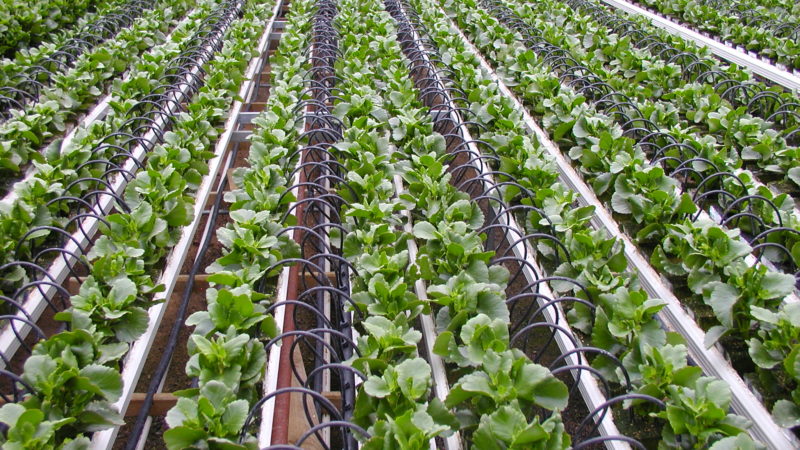
Policy Target:
Cut potable water use by 36% per capita by 2025
Southern California’s dry climate makes water conservation an important part of UCLA’s sustainability plan, including our water recycling program. Storm water, water from laboratories and reclaimed water from air conditioners and other equipment is captured and used to cool the campus cogeneration plant that provides efficient power to the University, saving 28 million gallons every year. UCLA has also taken measures to cut down on water use including installing air hand dryers and low-flow toilets in restrooms and transitioning from sprinklers to high-efficiency drip irrigation systems.
How you can reduce your water use at home:
Water saving measures such as turning off the tap when it's not in use or running your dishwasher and laundry only when it's full, can become habits with regular use. Installing low-flow toilets, faucets and water-efficient showerheads can drop your daily water consumption by one third. In the garden, channel rainwater from gutters into a barrel and use this water to irrigate your garden.
More Information
The UCLA Sustainable LA Grand Challenge is a university-wide initiative focused on getting Los Angeles to 100 percent sustainability in energy, water, and biodiversity by 2050. Read more about the work UCLA is doing to create a culture of sustainability. And check out the Green Guide to Sustainable Living at UCLA.